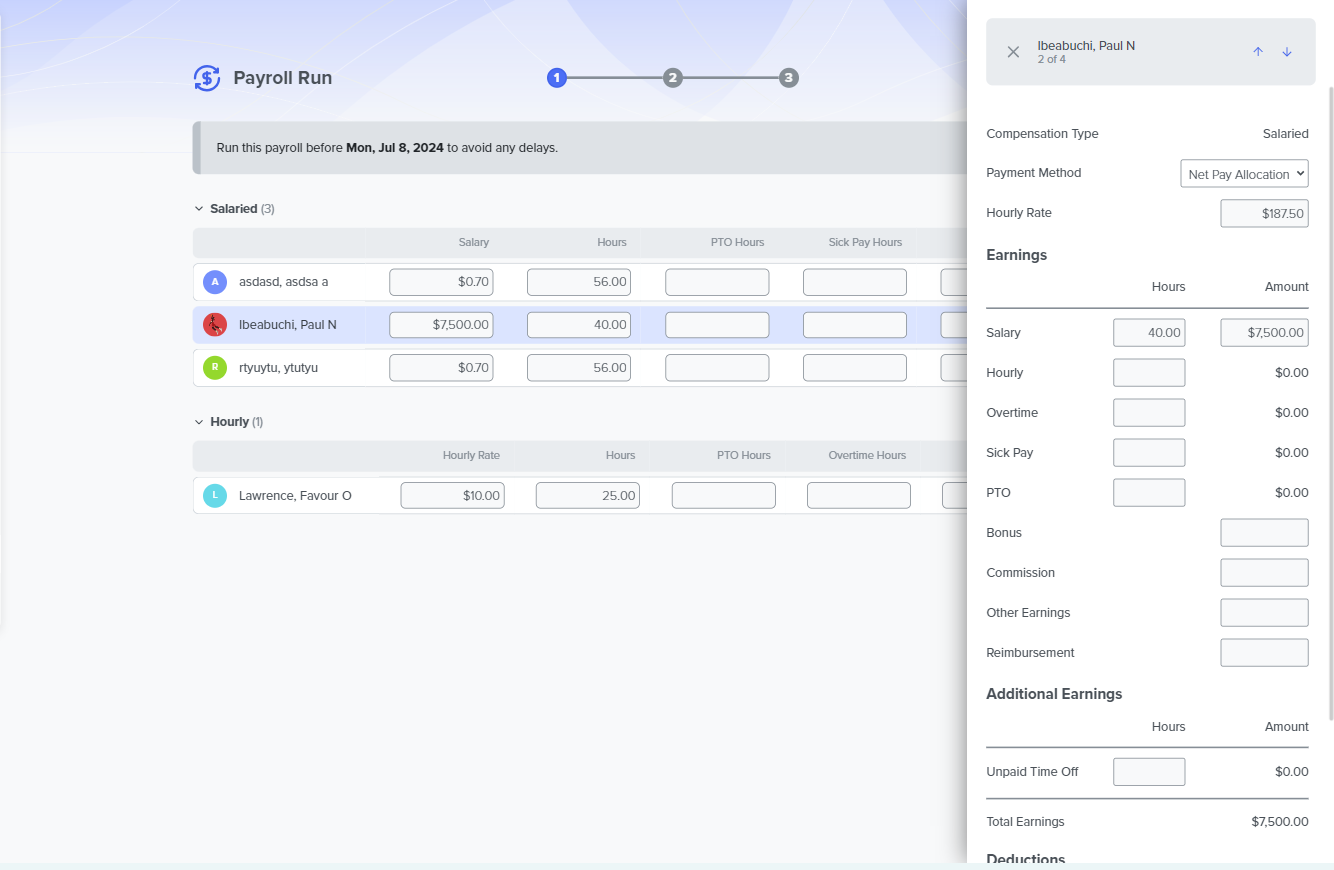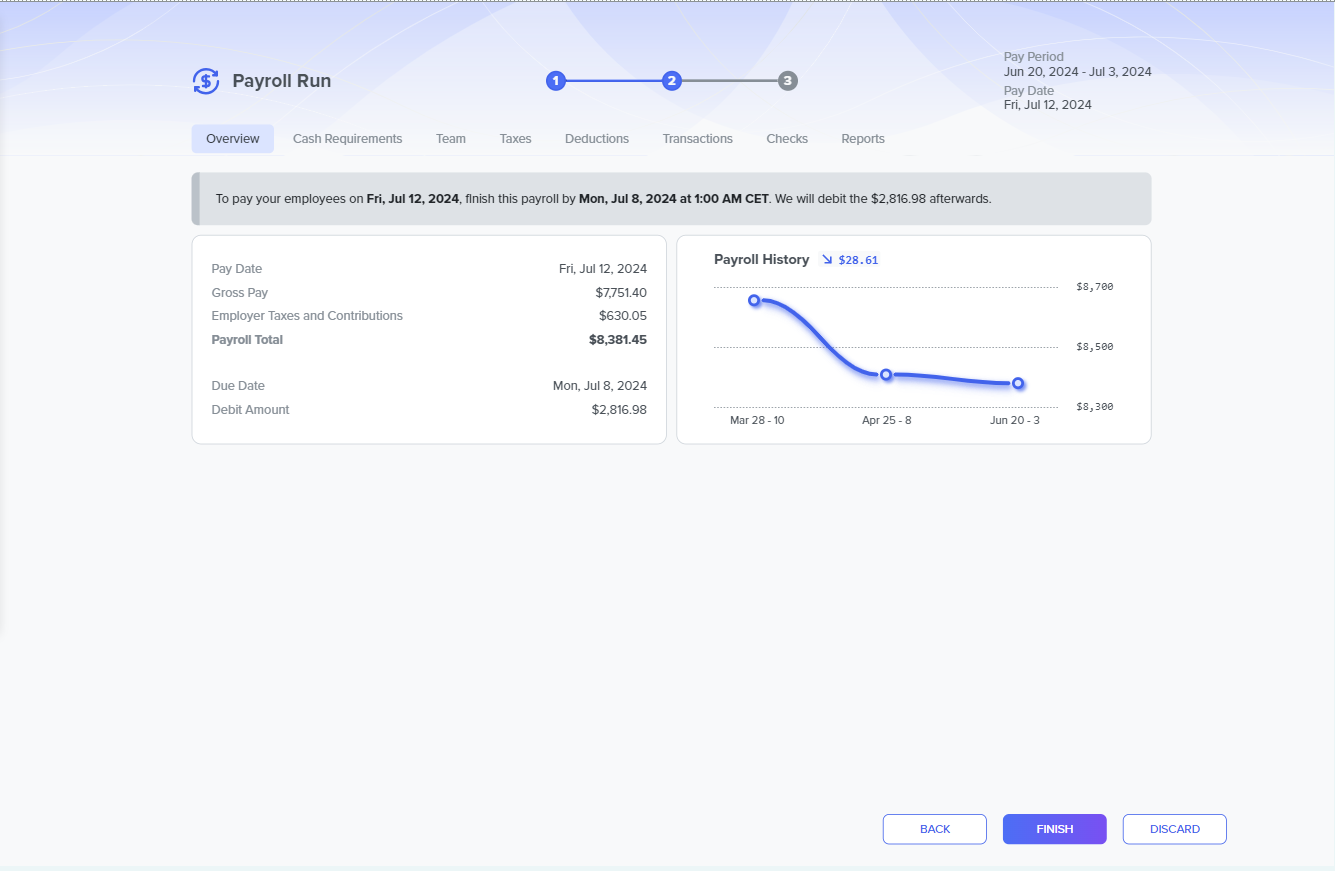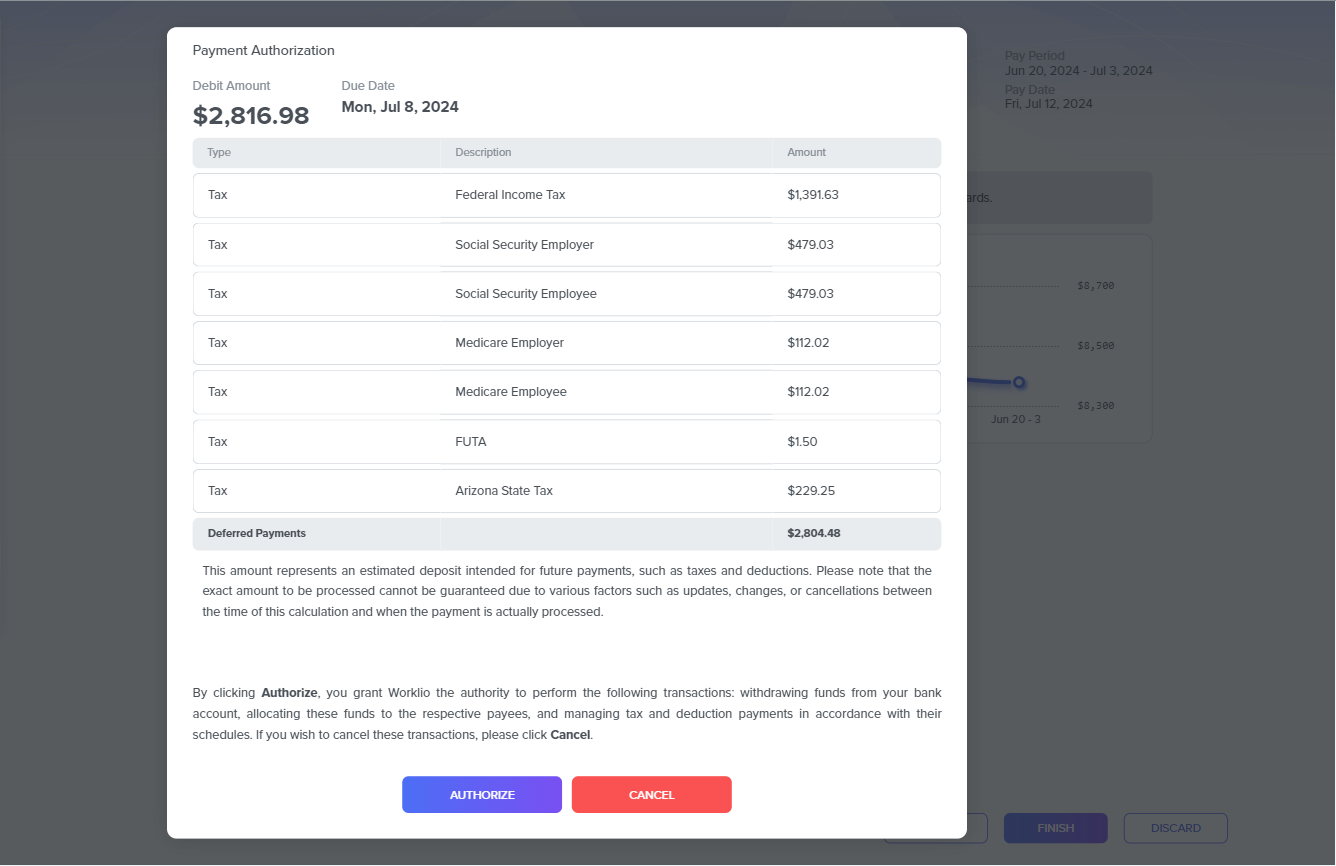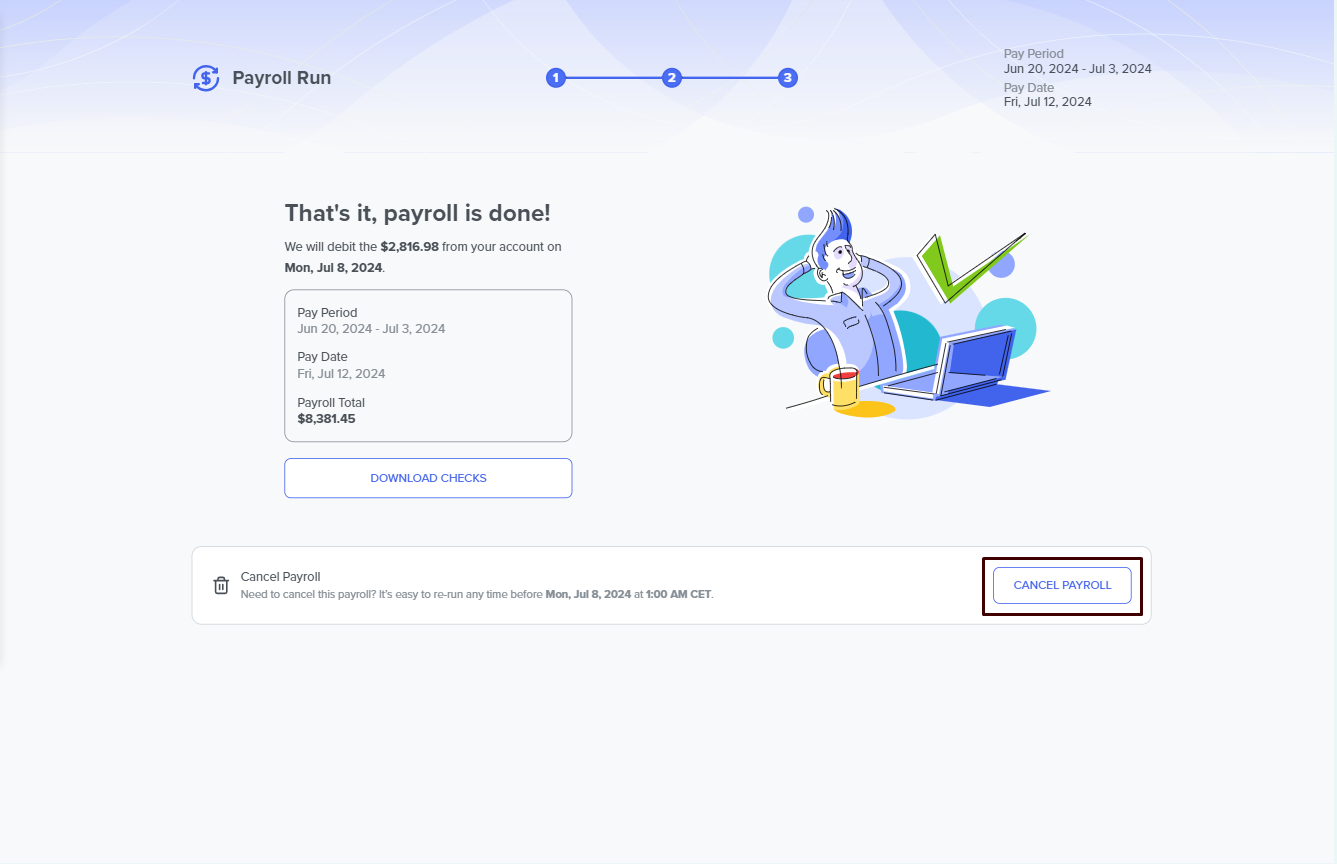Payroll run
Welcome to the streamlined Payroll Run guide in DecisionHR, designed to ensure smooth and accurate employee compensation. Follow this guide to navigate the payroll run process effectively, from start to finish, ensuring your team is paid accurately and on time.
What is payroll run?
Running payroll successfully is a fundamental aspect of managing your company's finances. It ensures that your employees are compensated accurately and on time.
However, the process can be intricate, involving various steps and parameters. In this guide, we will walk you through the concept of a payroll run and the essential steps involved in this crucial operation.
Before running Payroll
Before delving into the details, having specific prerequisites in place is crucial. To run payroll successfully, you must have set up your Company's taxes and your Bank Account. These parameters are necessary before running payroll.
Another critical parameter is the Import Prior Payroll History if you had previously run payroll outside our system in the current calendar year.
Where do you run payroll in the app?
You can run payroll from the payroll section in the app. You can also run payroll directly from your dashboard by clicking the Run Payroll widget.
Steps involved running payroll
There are usually three steps involved in running your company's payroll. The steps are:
- Payroll information
- Overview step
- Payment Authorization
Payroll information
Depending on the compensation types of your employees, the system groups your employees into the compensation types for collective payroll runs. For example, if you have hourly-paid employees, all employees that belong here will be grouped. The system does the same for your salary-based employees by grouping them.
You can click on each employee to set up their payroll parameters like Earnings, Deductions, Payment method, and Compensation Type. You can also add an extra payline for each employee if you want to set up multiple payroll parameters that still fall into the Regular Payroll run for such employee by clicking on the Add Payline button on the employee. However, you can delete this extra pay line if otherwise considered unnecessary before running the payroll.

Overview step
Here, you review all payroll parameters per employee involved in the payroll run. The payroll parameters that you review are:
Gross payroll information
This section contains general information about the payroll run, including Payroll Total, Account required amount, Account number (last four digits for security purposes), Run Date, Pay Date, and Total checks amount. You can also view your payroll history on a chart here, showing the maximum payroll amount you have run and when.
Employee pay statements
You review the pay statements of each employee based on the following parameters:
- Pay Amount
- Inputted Amount
- Reimbursements
- Gross Total.
You can click on each employee to open a modal with more complete information about that employee's pay. The system divides this modal into sections that include the following:
- General pay statement overview contains information such as taxes, gross pay, deductions, net pay, etc, for you to review. The earnings section shows the employee's compensation type and earnings based on that compensation. This section also contains information about workers' compensation codes that apply to the employee.
- Net Pay Distribution, which highlights the employee's payment choice. This choice could be a check or a bank account.
- Taxes reveal the employee and employer taxes deducted from the employee's pay.
Detailed employee and employer taxes
This section divides the taxes your company deducted from this payroll into Employee and Employer taxes. The gross deduction of these taxes from each employee is what you see in this section.
Payroll reports
You can view the different payroll parameters report in a separate window in this section. The parameters you can view their reports include Cash requirements, Deductions/Benefit Roster, Time Entry Sheet, Payroll Recap, Payroll Register, Employee Direct Deposit Register, Payroll Check Register, Deduction/Benefit Register, Deduction/Benefit Roster, Hours and Earnings Recap, and Cash Requirements Summary.
Although, you can not make edits to the payroll information here. A button, BACK, at the page's footer allows you to revert the payroll run. After reverting, you can make the necessary adjustments to the payroll and rerun.
However, if everything looks alright in the overview step, click the FINISH button at the page's footer to open the Payment Authorization page.

Payment Authorization
To finish your payroll run, you need to authorize your payments. You have the debit amount and due date on the authorization page.
Then, you have the deferred payment in a table that has the Debit Type, the Debit Description, and the Debit amount. The totality of the payment is called Deferred Payment. Deferred Payment is the amount that represents an estimated deposit intended for future payments, such as taxes and deductions.
NOTE
Please note that the system cannot guarantee the exact amount to be processed due to various factors, such as updates, changes, or cancellations between the time of this calculation and when the payment is processed.
After reviewing these payments, you have two options: Authorize and Cancel. By clicking Authorize, you grant our system the authority to perform the following transactions:
- withdrawing funds from your bank account
- allocating these funds to the respective payees
- managing tax and deduction payments per their schedules.
If you wish not to proceed with these transactions, please click Cancel.

After Authorization, you complete the payroll run process. However, if your payroll run date is not due yet, you can cancel the payroll before the due date. Also, you can download your employee's checks after completing the payroll run.

